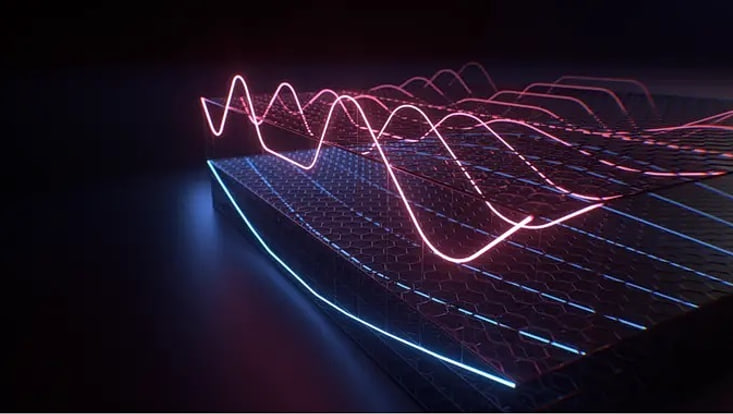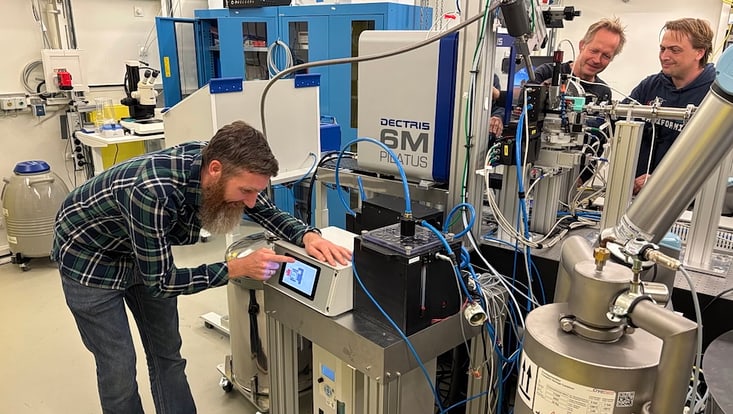Imaging of Matter
Scientists X-ray coronavirus proteins
2 April 2020

Photo: Pete Linforth/Pixabay
Research groups worldwide are intensively searching for starting points for active substances against SARS-CoV-2, as the corona virus was named by the World Health Organization (WHO). Scientists from Hamburg are also contributing their expertise to advance research into this novel virus. A series of experiments is now beginning on the Bahrenfeld Campus to examine two key proteins of the virus and two human proteins that enable its uptake into lung cells. If the investigation is successful, it could considerably shorten the search for an effective antiviral medicine.
Under the joint leadership of Prof. Christian Betzel and Prof. Arwen Pearson from Universität Hamburg and the Cluster of Excellence "CUI: Advanced Imaging of Matter" and Dr. Alke Meents from DESY, the study examines several thousand already existing active substances to see whether they also help against the new corona virus. The procedure is complicated and requires the expertise of different areas: From the Cluster of Excellence alone, Prof. Henry Chapman, who is also a lead scientist at DESY, Prof. Henning Tidow and Prof. Tobias Beck contribute their know-how in the fields of X-ray crystallography, protein design and structural biology. "Thanks to the complementary and excellent expertise of the participating research groups, we were able to put together a very effective task force within a very short time, with which we are now starting the search for active substances very effectively and promisingly. The combined know-how of the participating groups on the DESY campus and the cooperation in the search for active substances with institutes in the metropolitan region is probably unique. Of course, the very good cooperation and result-oriented communication between the working groups involved was and is also decisive," emphasizes Betzel.
Viruses cannot reproduce on their own
“We have just received the first plasmid to produce proteins that play a role in the reproduction process of the virus,” reports DESY researcher Alke Meents from the group of CUI speaker Henry Chapman. “With this plasmid, we will try to find active ingredients that bind to the corresponding protein.”
Viruses cannot reproduce on their own. To do this, they hijack cells of their host, introduce their own genetic material into the cells and ‘re-program’ them to produce new viruses, which in turn infect other cells. Proteins play an important role in this cycle. If one of these proteins can be inhibited, this might stop the cycle and the virus can no longer reproduce – the infection is cured.
Using X-rays to show the structure
In their search for such a compound, the scientists at Universität Hamburg and DESY, together with scientists at the University of Lübeck and the Fraunhofer Institute for Molecular Biology and Applied Ecology (IME) are following the approach of structural biology: With the bright X-rays from DESY's PETRA III research light source, the three-dimensional spatial structure of proteins can be resolved with an accuracy of 0.1 nanometers. “That is ten millionth of a millimeter. Such a resolution makes it possible to see the individual atoms of the molecule,” says Meents.
The team is examining around 3700 active compounds from the IME's database “Screening Port” to see which of them bind to any of the three proteins. “If we find a substance that binds particularly well, researchers at the University of Lübeck will investigate in the laboratory whether it also inhibits protein activity,” explains Meents. In a third step, the Bernhard Nocht Institute for Tropical Medicine in Hamburg plans to test in cell cultures whether the substance inhibits or even prevents the virus from multiplying.
“The database of the Screening Port contains 3700 active substances that have already been approved for the treatment of humans or are in different stages of testing,” says Meents. “If we should come across a suitable candidate for combating SARS-CoV-2 among them, it could be used in clinical trials much more quickly than in usual drug development. This could save months or even years.”
Hope for the lucky shot
However, it is not possible to foresee when and if this search will be successful. “Normally such a project is scheduled to last about two years,” Meents reports. “If you do it vigorously, you can speed it up. And if we should have a lucky shot at the beginning, we might come up with a first potential drug candidate after just a few weeks, which can then be tested in cell cultures and later in animal models. Still, our experiments are at the very beginning of drug development and this is usually a long process.” Text: DESY PM/CUI


